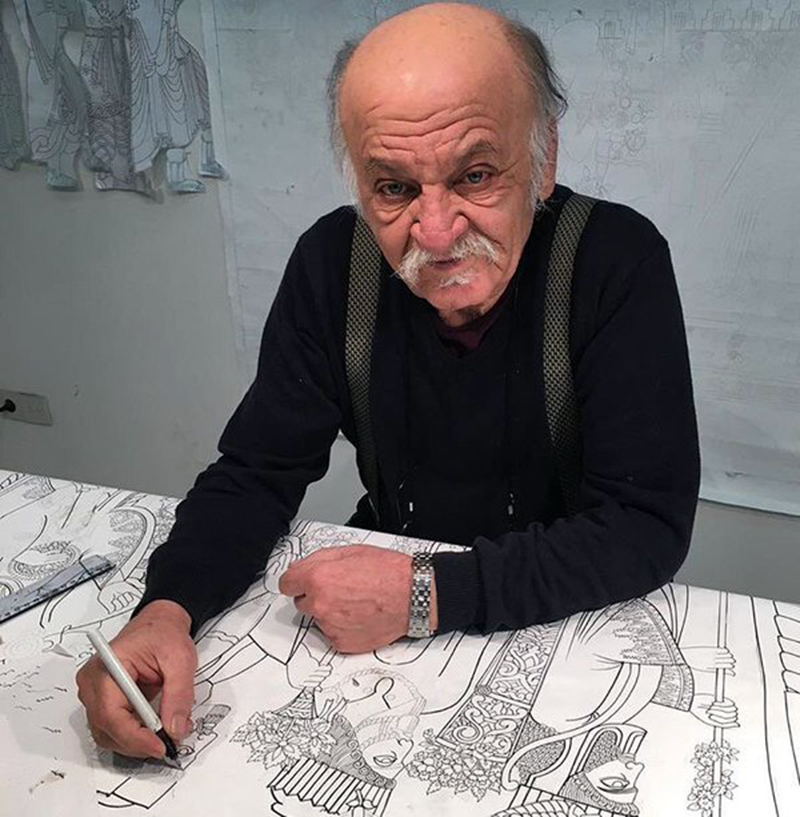Ali Akbar Sadeghi was born on 1937 a graduate of the College of Art, University of Tehran, is one of the most prolific and successful Iranian painters and artists.
As a child, Ali Akbar Sadeghi reminisces that he would be lost in the chants of narrators that gave account of Shahnameh stories; accounts of Siavash riding on horseback, still-armored Bijan, Rostam’s arrow hitting Ashkboos in the heart, Faramarz, elephant rider, and bravery of other heroes whose names remain in Persian literature and folklore forever. In general, the lyrical, heroic world of legends is an indispensable part of Ali Akbar Sadeghi’s worldview, a world whose figurative representations sometimes appear in old miniature paintings or more popular forms of art, including coffeehouse painting, reverse painting on glass, imprints on wood and paper, and stunning images in lithographed books.
In his evocative paintings, Ali Akbar Sadeghi draws on the rich traditions of Persian art but adds to them a surreal edge that involves dizzying spatial manipulations and startling combinations of real and fantastical objects, producing breath taking kaleidoscopes of colour and form.
A master story-teller, the varied Persian sources of Sadeghi's tales range from historical Persian iconography including swords, horses, gardens and warriors, intricate decorative motifs and patterns taken from classic rugs, to the compositions of archetypal Iranian miniatures and portraits, particularly those of the Qajar dynasty.
Sadeghi has been artistically active in the past 60 years.
His style is a kind of Iranian surrealism, based on Iranian forms and compositions of traditional paintings, the use of Iranian iconography, and the use of Persian cultural motifs, signs and myths, full of movement and action, in prominent and genuine oil colours, in large frames, very personal, reminiscent of epic traditional Persian paintings and illustrations, with a conspicuous mythical style.
He initiated a special style in Persian painting, influenced by Coffee House painting, iconography, and traditional Iranian portrait painting, following the Qajar tradition – a mixture of a kind of surrealism, influenced by the art of stained glass.
He is among the first individuals involved in the Centre for the Intellectual Development of Children and the Youth, and was among the founders of the Film Animation department of this institute. In 1991, at the 25th anniversary of the foundation of the Institute for the Intellectual Development of Children and Young Adults, Sadeghi was honoured for his outstanding achievements in book illustration and film



.jpg)
Comments